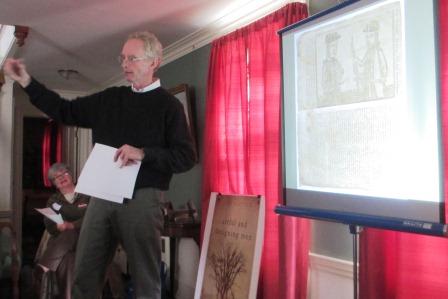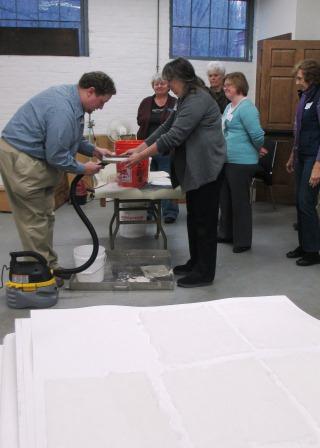By Dan Hinchen, Reader Services
If you have ever had the pleasure of perusing books from the 18th century, or earlier, you may have noticed the appearance of sequences of letters and numbers that appear at the bottom of pages. Maybe you saw a series of four pages that had C, C2, C3, C4, in that order, followed by four pages without those letters. Then, four pages with the same sequence using the letter D, and so on through the alphabet. If you have noticed these, have you ever wondered what they mean? Well if so, keep reading because this post is for you.
During the hand-press period of printing books, the printers included these alpha-numeric sequences, called signatures, to indicate to the binder the order in which the material should be bound together. Nowadays, when constructing descriptive bibliographies of these rare books, examination of the signatures can show anomalies in the printing process and can help distinguish among various printings of a single title.
In my last post I provided a collation formula for a book called The Doctrine of Devils and explained how to determine the format of the book. Now we can look at the collation and signing statement. As you might remember, the collation formula for the book looks like this:
8°: A4 B-O8; [$4 (-A3,4) signed; missigning I4 as I3]; 108 leaves; pp. [8] 1-205 [3].
We know that the first part means that the book is an octavo which we determined by looking at various physical clues to find out that the pages were created on large sheets of paper that were folded three times to create gatherings of eight leaves, or 16 pages. Now, we can use that information to explain the collation of the book and the signing statement. These two pieces of the puzzle appear in the formula as:
A4 B-O8; [$4 (-A3,4) signed; missigning I4 as I3]
The first part, the collation, tells us how many sections are in the book and how many leaves are in each section. Here, we see that section A has four leaves, while sections B-O have eight leaves each. [If the book was longer, it might go from B, all the way to Cc, meaning that we ended the alphabet once and started again in double]. The second piece, appearing in brackets, is the signing statement, which informs us of the pattern of signatures throughout the book and also indicates any mistakes or deviations. $4 tells us that the printer signed the first four leaves of each gathering, or half of the gathering (-A3,4 indicates that in gathering A only the first two leaves had signatures). Also, we see that the printer incorrectly signed the leaf that was to be I4 and instead used I3 again. Otherwise, there appear to be no other mistakes or deviations, pretty simple.
108 leaves
One last step is to do a leaf count, which is just as it sounds, and then determine the pagination. We can use the leaf count to double-check our collation to ensure it makes sense. In this case, the leaf count yielded a total of 108 leaves. We know from the collation that section A has four leaves, and that each section, B-O (excluding J*) contains eight leaves. So, we have 4 + (8 x 13) = 108. It appears to all match up.
pp. [8] 1-205 [3]
The pagination statement is a check to see how the pages are numbered and if any got skipped or left out. The statement above means that there were eight pages of front matter that did not get numbered, so they are in brackets. Then we have the pages that were numbered, 1-205, with no mistakes. Finally, there are three pages at the end that also are unnumbered. Adding those together, we get a page count of 216, which is exactly double the leaf count. Everything agrees!
So the next time you have your hands on an old book, pay attention to all of these little signs and indicators and you might just be able to figure out your own collation formula for the book and have your own little coded description.
And since this will probably be my last post about collation for a while, I want to leave you with one more example of a formula that is a bit more complex, just to illustrate how long and tedious these can get. Unfortunately, I no longer have the title of the work, just that it was published in London in 1773. Good luck deciphering!
2°: [A]1a2b1 B-6Z2 7B2*7B2 7D-7F2 χ7F2 7G-7I2 [$1signed]; 296 leaves; pp.[8]1-548 553-557 [=553] [31] [misnumbering 200 as 300, 248 as 548, and 412 as 112].
*Printers used the 23-letter Latin alphabet when creating their signatures rather than our modern 26-letter alphabet. In the 23-letter alphabet, I and J are interchangeable, though never both used; ditto for the letters U and V; last, there is no W in the Latin alphabet.




